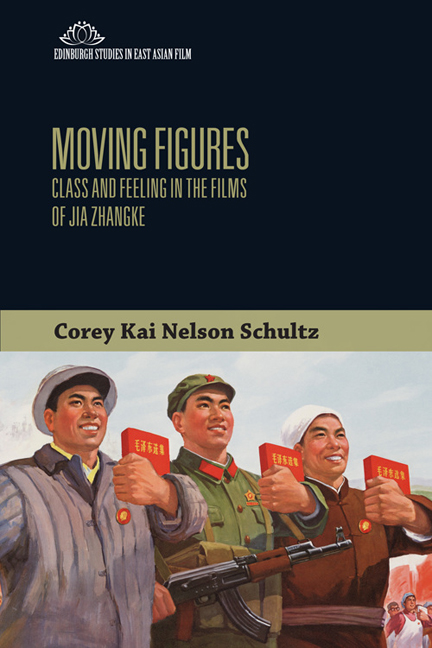Book contents
- Frontmatter
- Contents
- List of Figures
- Acknowledgments
- Introduction
- 1 The Worker Class: From Leader to the Margins
- 2 The Peasant and the Mingong: From Empathy to Sympathy to Looking Back
- 3 The Soldier: From Degraded Reproduction to Avenging Hero
- 4 The Intellectual: Power and the Voice
- 5 The Entrepreneur: From Crook to “New Reform Model”
- Notes
- Filmography
- Works Cited
- Index
Introduction
Published online by Cambridge University Press: 10 May 2023
- Frontmatter
- Contents
- List of Figures
- Acknowledgments
- Introduction
- 1 The Worker Class: From Leader to the Margins
- 2 The Peasant and the Mingong: From Empathy to Sympathy to Looking Back
- 3 The Soldier: From Degraded Reproduction to Avenging Hero
- 4 The Intellectual: Power and the Voice
- 5 The Entrepreneur: From Crook to “New Reform Model”
- Notes
- Filmography
- Works Cited
- Index
Summary
This poster, titled “Chinese are Amazing!” (1996), was one of four “‘Amazing’ Educational Propaganda Posters” produced for primary and middle schools in compliance with the Chinese Communist Party (CCP) Propaganda Department's “Outline to Implement Patriotic Education.” It features the following figures: in the foreground from left to right, we have the Maoist figures of the soldier, worker, and peasant, and in the background, also from left to right, an athlete, an intellectual, and a business manager. Starting from this image, this book analyzes the class figures of the worker, peasant, soldier, intellectual, and entrepreneur in the films of the contemporary Chinese director Jia Zhangke. Every chapter is structured around a class figure, and in each one I examine a figure's socio-historical and cultural contexts, its representation in the films, the cinematic tropes that are attached to it, and the feelings that are evoked. These five figures were chosen because they are the contemporary descendants of the five traditional classes of the craftsmen, peasants, soldiers, scholar gentry, and merchants: the craftsmen (工), who became the worker class in the Maoist period; the peasants (农), who have also become the mingong (民工) rural-tourban migrant workers; the soldiers (兵), who became the People's Liberation Army (PLA) soldiers; the scholar gentry (士), who are now the intellectuals; and the merchants (商), who are now the managers and entrepreneurs.
These figures have been socially, politically, and culturally significant throughout China's modern history. As the nation has transitioned from a planned to a market economy during the Reform Era (1978 to present), old social classes have been dissolved and new ones have been created – or, in some cases, have re-appeared from China's pre-Communist past. For instance, during the Maoist period (1949–76), the idealized classes of the worker, peasant, and soldier (工农兵) were exalted in Chinese art, literature, film, and performance.
- Type
- Chapter
- Information
- Moving FiguresClass and Feeling in the Films of Jia Zhangke, pp. 1 - 19Publisher: Edinburgh University PressPrint publication year: 2018



